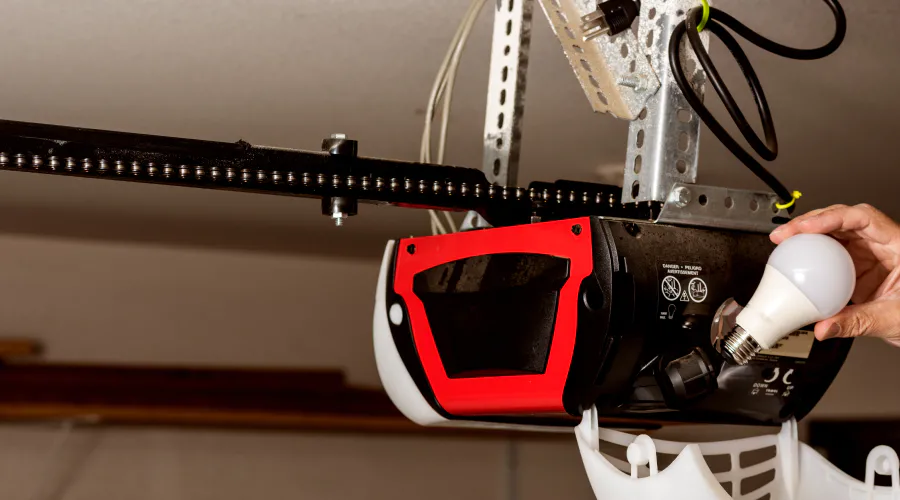Few things can be more frustrating than when you press your garage door opener, and all you hear is a buzzing sound, but the door refuses to budge. This scenario can leave you wondering what’s gone wrong and how to fix it. In this comprehensive guide, we’ll explore the common reasons behind a garage door that buzzes but doesn’t open and provide step-by-step troubleshooting tips to get it back on track.

Understanding the Buzzing Sound
Why Does Your Garage Door Buzz?
The buzzing sound you hear is often a sign that the garage door opener motor is working, but it’s encountering resistance when trying to operate the door. Several factors can contribute to this issue:
- Obstructions: Objects or debris in the path of the garage door can prevent it from opening. The buzzing noise indicates that the motor is trying to move the door, but it’s unable to due to the blockage.
- Broken Springs or Cables: If the garage door’s springs or cables are damaged or broken, it can result in uneven weight distribution and resistance when opening. The buzzing occurs as the motor struggles to overcome this resistance.
- Lack of Lubrication: Proper lubrication of moving parts is essential for smooth garage door operation. Without it, the motor may produce a buzzing sound as it grapples with increased friction.
- Misaligned Tracks: If the garage door tracks are misaligned, the rollers can become stuck, causing the motor to buzz without successful door movement.
Troubleshooting the Buzzing Garage Door
1. Check for Obstructions
Begin by inspecting the area around and under the garage door. Look for any objects, tools, or debris that might be blocking the path of the door. Remove these obstructions and try operating the door again.
2. Test the Manual Release*
Most garage door openers have a manual release cord that disengages the opener from the door. Pull this cord to disconnect the opener, allowing you to manually open and close the door. If the door operates smoothly by hand, the issue may be with the opener itself.
3. Examine the Springs and Cables
Visually inspect the garage door springs and cables for any signs of damage or breakage. If you notice any issues, it’s best to contact a professional technician for repairs, as working with these components can be dangerous.
4. Lubricate Moving Parts
Apply a garage door lubricant to all moving parts, including the rollers, hinges, springs, and tracks. Lubrication can reduce friction and help the motor operate more efficiently.
5. Check for Track Misalignment
Inspect the tracks on both sides of the garage door for alignment issues. If you notice gaps or misalignment, use a rubber mallet to gently tap the tracks back into position. Be cautious not to damage the tracks during this process.
6. Test the Safety Sensors*
Garage doors are equipped with safety sensors that prevent them from closing if there’s an obstruction in the path. Ensure that the sensors are properly aligned and free from dirt or debris. Clean and realign them if necessary.
7. Inspect the Door Balance*
A properly balanced garage door should stay in place when halfway open and not slam shut or fly open. If it’s unbalanced, the opener will struggle to lift it. Adjusting the balance may require professional assistance.
Conclusion: Restoring Smooth Garage Door Operation
A garage door that buzzes but doesn’t open can be a frustrating issue, but with the right troubleshooting steps, you can often identify and resolve the problem. Remember to prioritize safety, and if you’re uncertain about any repairs, don’t hesitate to seek assistance from a qualified garage door technician. By addressing the underlying issues, you can enjoy the convenience and functionality of your garage door once again.



Leave a Reply